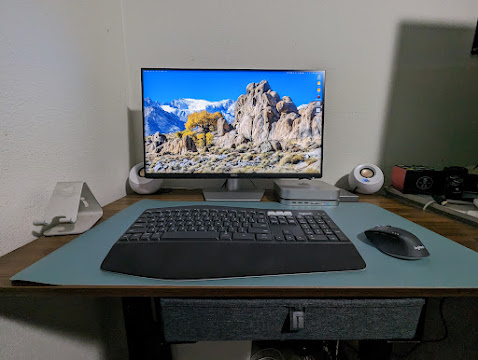I'm finding shooting in infrared to be fun, but it requires some new skills (and programs) to get the results I'm looking for. Some of these hurdles to work through are things that with my current setup I can't fix. Infrared photography on a standard color camera requires an IR filter and longer exposures times which will usually end up with softer photos, at best, or blurry shots. Working on the final "faux" color look required using a program that had more involved editing tools than Aperture or Lightroom have available to them. Even Photoshop Elements 10 didn't have a color mixer which allows me to switch colors. So after some suggestions I settled on the very wonderful Pixelmator, and have added Topaz Labs' PhotoFXLab. So what I have here is an outline of how I worked this IR shot.
The original out of camera shot. The shot specifics are an aperture reading of 3.5 ("wide open" for my lens) and an ISO of 400 to help minimize the exposure time. Even so this is .8 of a second. The conditions were probably not idea for IR because it was windy.
 |
| Straight out of camera. It's a little red |
Next, while in Aperture, I used the white balance dropper on the foliage to de-redden things out. Now it looks like a shot that Curiosity took while on Mars.
 |
| After some white balance adjustments |
I was ok with this shot for the most part, but it was still too red for me. So I took it into Pixelmator where I switched the colors around in an attempt to get a blue sky.
 |
| From red to blue |
I certainly got blue, but it was now too blue, and too yellow. So then I took the two photos and worked on them separately with the idea of combining the two. I desaturated the blue one and the red one so the sky wasn't so blue and the ground wasn't so red. Then using layers and masks I combined the two and somehow got this, my final version of the photo.
 |
| Finished shot |
I'm fairly happy with this, but I feel I could do better. Or, I could just get rid of the whole color problem completely and go black and white. But how do you know if a B&W shot is an IR shot? Well typically normal B&W shots have the foliage of the shot darker than white. In the shot below the foliage is a bright almost glowing white.
 |
| B&W infrared |
I didn't think about going B&W with this shot until I was writing this post. I used Silver Efex Pro 2 with it's default setting and used a blue filter on it to really darken the sky. I really liked the outcome of this, and it was a lot easier to do. Still more to learn about IR, and I'm going to try to post more IR shots as I experiment with, and learn more about, light and colors. Who knew photography could be so scientific?







Comments
Post a Comment